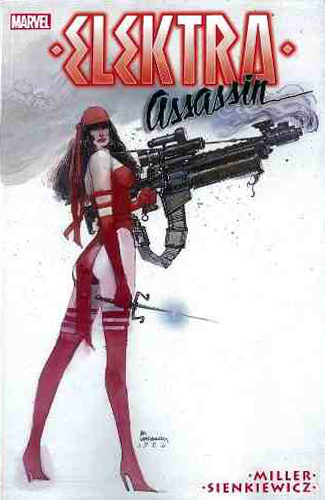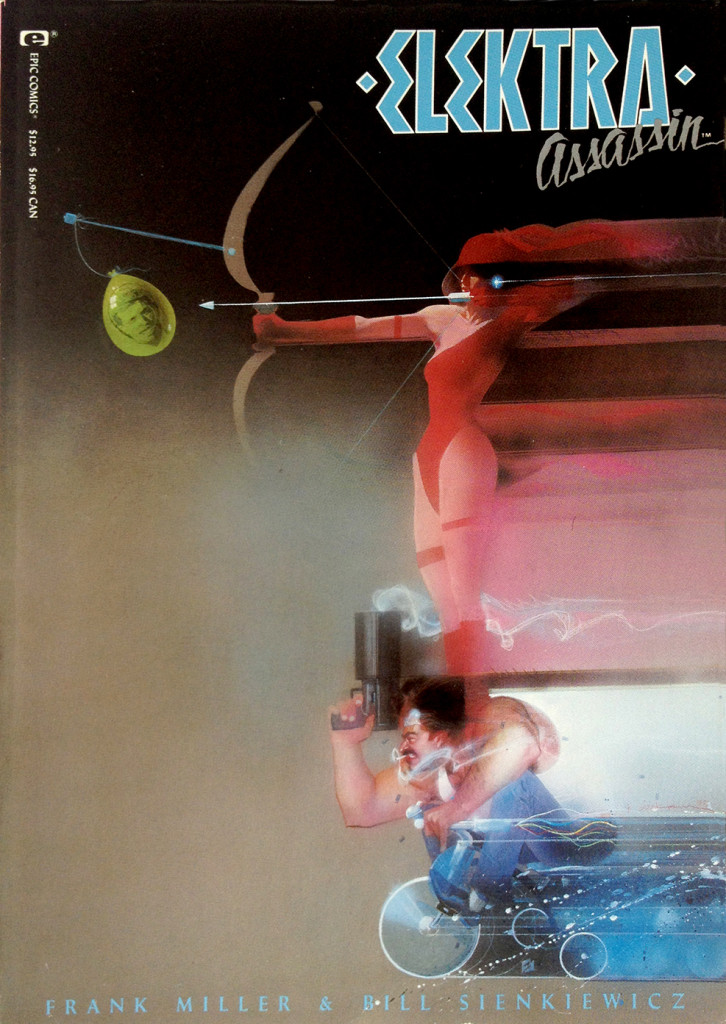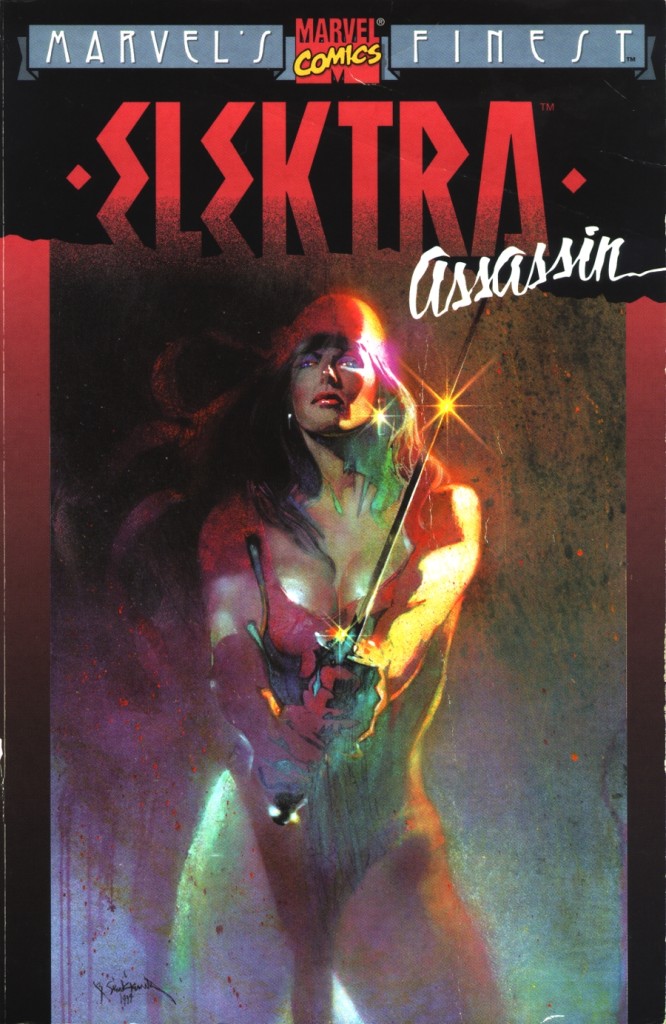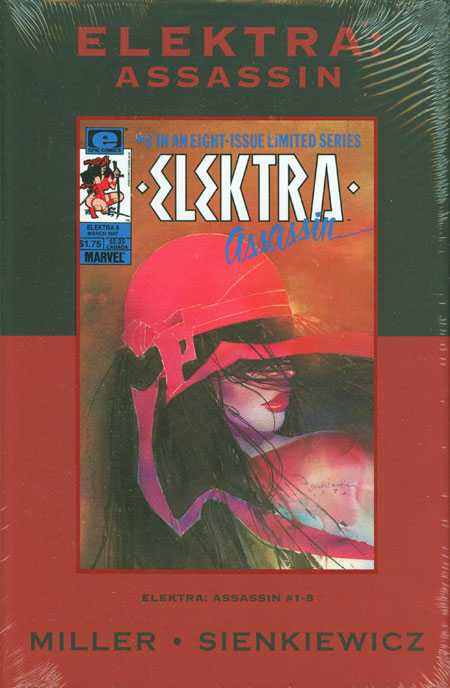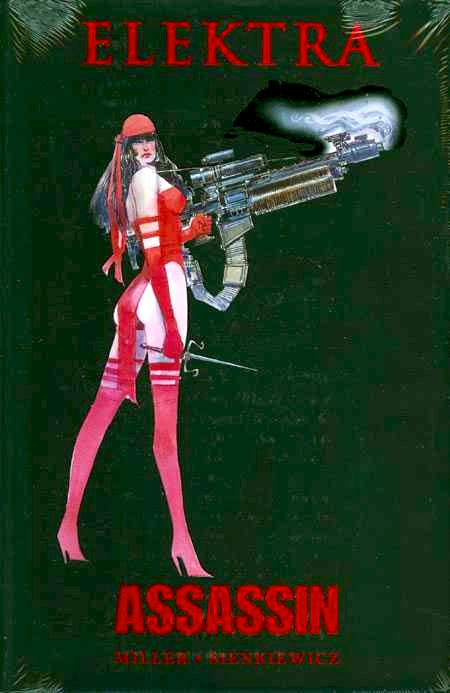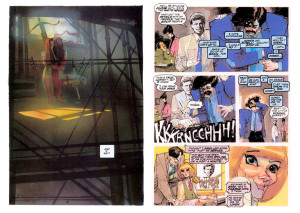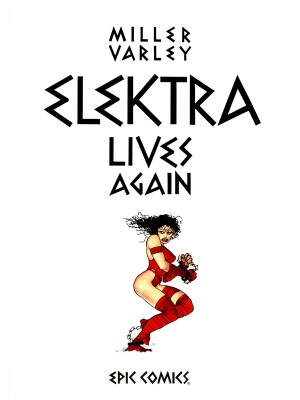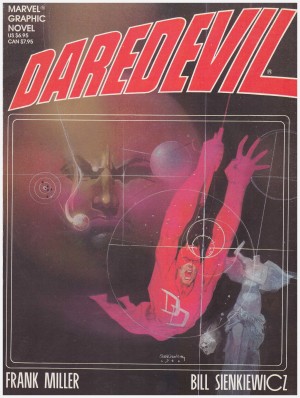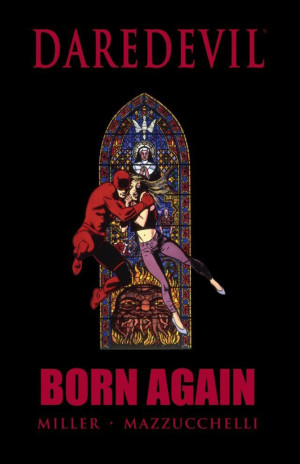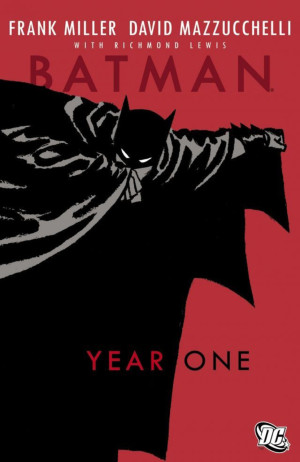Review by Woodrow Phoenix
Originally serialised in 1986 and 1987, Elektra: Assassin was written by Frank Miller and drawn by Bill Sienkiewicz for Epic, a Marvel Comics imprint for ‘mature readers’. There is no nudity, but there are sexual situations and lots of PG-13 language.
Frank Miller created Elektra, a telepathic ninja assassin, during his run on Daredevil, and her massive popularity had fans demanding her revival after she was killed by Daredevil’s nemesis Bullseye. This series is an untold episode from Elektra’s past although the timeline is hazy, perhaps on purpose, as it the tale doesn’t occupy standard Marvel continuity, particularly at the end.
The plot concerns a United States Presidential candidate, called Ken Wind (his campaign slogan: “Not wind like a watch, but wind – like the air”). He’s a John F. Kennedy lookalike, about to become the next president. However he is not what he appears. Wind is a puppet, possessed by the Beast, a monstrous inhuman force. This being intends to use America’s nuclear arsenal to trigger Armageddon by firing every missile at Russia, ensuring a retaliation that will destroy the Earth. Elektra accidentally discovers this doomsday plan while on a mission in South America, so has to reach Washington and somehow prevent Ken Wind from becoming President.
The fractured narrative style that Miller and Sienkiewicz employ through this book means the plot above is only the small skeleton that their story hangs on. Beginning with a kind of origin for Elektra drawn in naturalistic, painterly tones and then bright cartoony scribbles, the reader is thrown into the middle of constantly shifting viewpoints and pieces of story as we move between Elektra’s narration and that of John Garrett, a S.H.I.E.L.D. agent who tries to catch Elektra, but becomes her reluctant partner.
Sienkiewicz is an artist with a remarkable range of abilities, and his experimental use of styles, different kinds of rendering and skilful handling of paint means that he can literally draw anything at all, in any way that he wants to. A page of his comics can go from photo-realistic naturalism via bigfoot cartooning to expressionism in a few panels. But his real skill is in tying these different approaches together to create a coherent effect, rather than just visual fireworks that impress with their technique. Miller takes the freedom of this smorgasbord of imagery and no need to comply with the comics code to go off on a satirical and sexual escapade. Unfortunately the political commentary is of the most ham-fisted and obvious kind. Democrat or Republican, both are worthless; power corrupts; it’s a madhouse and the lunatics are in charge. Garrett is a thuggish reactionary played for laughs, but hey, everyone else is worse. Sienkiewicz gives Miller’s great ideas and terrible ideas an equally beautiful sheen.
Miller was a very busy man in the late 1980s, producing Daredevil: Born Again with David Mazzucchelli, the blockbusting Dark Knight Returns, then Elektra: Assassin, and then Batman: Year One, again with Mazzucchelli. Three of those series made massive impacts still echoing through superhero comics. Elektra: Assassin has disappeared off the radar, no doubt due to its sprawling, parodic style, odd and problematic characters and creepy psychosexual subplots that make it a very difficult book to market to a mainstream audience.
It’s not a lost masterpiece, but it’s worth reading for its style and execution, thanks to Bill Sienkiewicz’s constantly unorthodox and skilful artwork, for which he won the Kirby Award (forerunner to the Eisner Award) in 1987.
